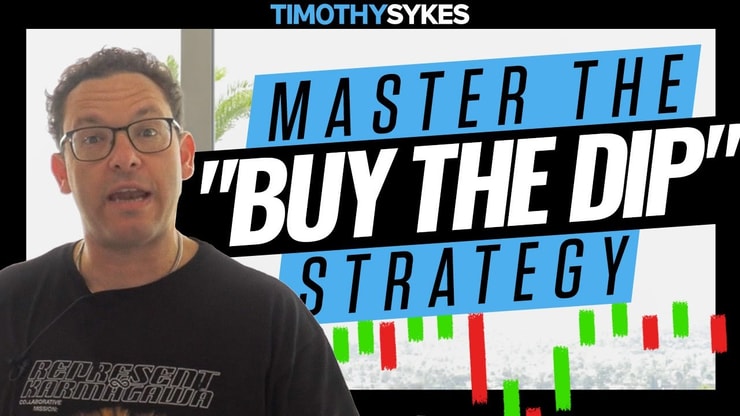I nearly made $1K in trading profits in the ticker WE yesterday before making one fatal error.
I utilized one strategy to rack up those wins.
And If you’ve been reading the blog for a while, you can probably guess what it is.
If not, then you’re in for a real treat.
Either way, it’s worth a refresher.
Why?
Because this is probably the number one strategy, I’m applying to make money in this market.
And I will continue to ride it until it stops working.
Today, I’ll show you how I used it to profit in WE, its mechanics, and what I eventually did wrong to ruin my day.
Table of Contents
Before We Get Started: A Word Of Caution

While the strategy I will share with you is among my favorite to trade in this market, it’s not reserved for big-account traders.
It’s true, I used it to make nearly $1K in trading profits trading WeWork yesterday. However, if you’re a beginner trader, your focus shouldn’t be building up your trading account.
First, you must build up your knowledge account.
Don’t get caught up in the numbers; focus on the process.
That said, this strategy works whether you have a $1000 or $1,000,000 account.
In other words, it’s scalable.
My Go-To Strategy

If you want to make money as a day trader, you must get comfortable trading volatile stocks.
That generally means trading stocks with some sort of news or catalyst.
In addition, you want to focus on the most actively traded stocks.
Some of the best plays recently have been low-float stocks that have traded the float several times.
And while I do prefer to trade catalyst stocks…I’m often not in a position to trade them right away.
A lot of the time, we’ll get these news alerts in the pre-market.
By the way, if you’re looking for a fast and reliable source, the best place to get real-time, actionable news is StocksToTrade Breaking News.
That said, I typically don’t trade in the pre-market.
So, three things usually happen when a stock gaps up at around the open.
- Bag holders use the gap up to get out of their position.
- Undisciplined and newbie traders chase the move up
- Aggressive short sellers try to knock down the stock
And while we don’t know who will win the battle, I’m generally looking to play it one way.
I’M WAITING FOR A PANIC…
It typically happens when the overaggressive longs start puking their position, while the short sellers attack.
I’m waiting for maximum panic situations when considering dip buying opportunities.
Why?
Because they create price inefficiencies that can lead to bounces.
I love trading this strategy at or near the open…but lately, I’ve traded it a few hours after the open.
Like in the ticker symbol WE yesterday.
Source: StocksToTrade
You can see and read all about my trades in it here.
More Breaking News
- 22nd Century Group’s Bold News: A Game Changer for XXII?
- Is it Too Late to Jump on Marathon Petroleum’s Rising Stock?
- Is SEALSQ (LAES) Stock Over Enroute to a Comeback or Dreaded Pitfall?
Mastering The Dip Buy
The reason why this pattern is working so well is because the shorts are getting overly aggressive.
And it’s creating massive squeezes.
We’ve all heard about WeWork’s financing issues.
That said, when shorts put on their analyst hats you know a squeeze will likely happen…
WOW $WE SQUEEEEEEEEEEEEEEZE, REMEMBER TO LOCK IN PROFITS ALONG THE WAY, CONGRATS TO ALL LONGS! GOD BLESS https://t.co/dlZA6DVZcP YOU DUMB AF SHORT SELLERS, I LOVE YOU SOOOOOO MUCH LOL
— Timothy Sykes (@timothysykes) September 12, 2023
They start talking about the fundamentals of the company, and how the stock shouldn’t be up that much…
But here’s the thing…
Stocks don’t trade off fundamentals. They trade off price action.
The law of supply and demand rules the day.
Eventually, these things correct themselves, but most traders can’t absorb the moves, forcing them to get out at the worst time, or stubbornly getting blown out.
Besides looking for a panic…here’s what else I’m paying attention to:
Don’t worry about whether the company is “good” or not. Lately, the worse the company, the better. I know that sounds crazy, but that’s what happens when shorts forget the principle of supply and demand.
Instead, focus on whether it has a pre-market catalyst or not.
- If it has a catalyst, watch the volume. Ideally, you want to be trading the heavier volume stocks.
- And, of course, it has to be a high-percentage mover. Why? Because shorts think this company doesn’t deserve to be up that much, the more they short, the greater the squeeze.
- Trade these stocks; don’t fall in love with them. For the most part, I’m looking at these stocks as plays. Some have run significantly, but I’m not here to chase. I’m here to make a quick move and be out.
- Follow the momentum. Pick your spots. You don’t have to be in them the whole day or try to HODL. I ended up trading WE 3x yesterday.
My Fatal Mistake

One of the best parts of being a coach and mentor is seeing my students succeed. If I miss a trade and they make in it, I’m just as happy or even happier.
However, my third attempt in WE was around $4.16, and I cut losses quickly on it shortly after it rallied to $6.70.
One of my rules is not to trade these plays near the end of the day. But unfortunately, I was at my screen watching, I was excited and upset I missed my chance to profit from the last runup.
I ended up buying 2K shares at $5.97 at around 3 PM…thinking that was a sufficient dip from its highs of $6.70.
However, it didn’t get back to $6…in fact it started selling off.
Instead of cutting losses quickly, I added to a loser, something you shouldn’t do. I added 4K shares at $5.67.
That didn’t work…and I ended up puking the entire position at $5.54. It wiped out my nearly $1K in gains and then some. I ended up losing -$1,835 on that trade.
And while I’m not happy about the result, I can’t be upset at the outcome. This happens when you break the rules, lose discipline, and overtrade.
You can read the details of the trade right here.
Want To Find The Next Epic Short Squeeze?

Ever wondered how to spot a potential short squeeze before it erupts?
The stock market is full of surprises, but you can be one step ahead with the right strategy and know-how.
Let me tell you, it’s not about guessing or using complex mathematical models. It’s about understanding the psychology, the indicators, and, most importantly, the behavior of the market participants.
You might recall my recent trade with the ticker WE, where I raked in nearly $1K.
It was no fluke. It culminates with years of experience, pattern recognition, and knowing when to strike.
Here’s the deal: The current market conditions are ripe for certain patterns, and I’ve honed one particular strategy yielding consistent returns.
Want to know the ins and outs of this strategy?
Want to learn how to spot these squeezes before they pop?
That’s where our live training comes into play.
Join us as we dissect recent trades, break down the core elements of a potential short squeeze, and give you actionable insights to apply in real-time trading situations.
The best part? This knowledge-packed session is available without burning a hole in your pocket.
Are you game?
[CLICK HERE TO JOIN US FOR THE UPCOMING
The market waits for no one.
Make sure you’re well-armed for the next big move.




Leave a reply